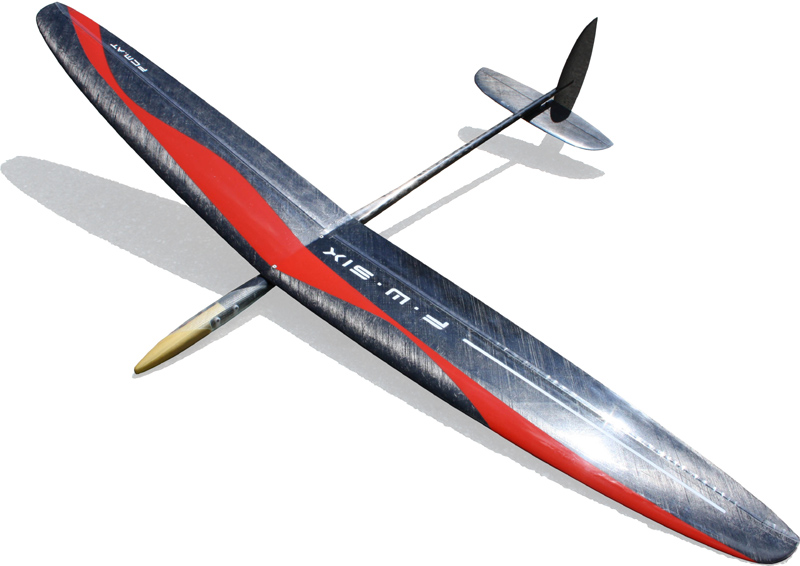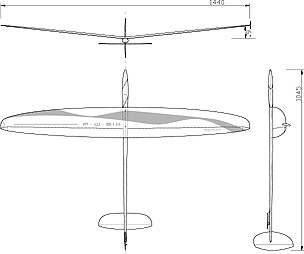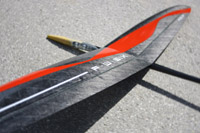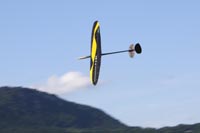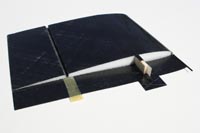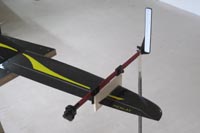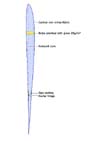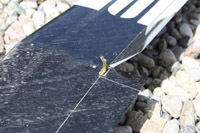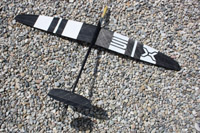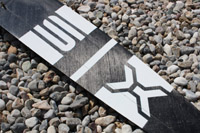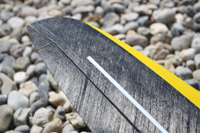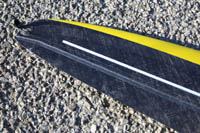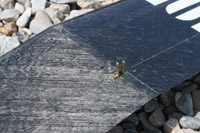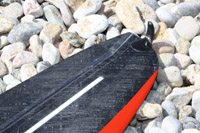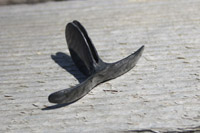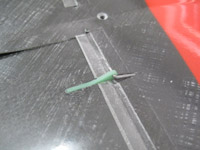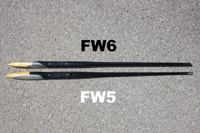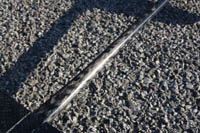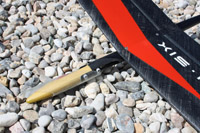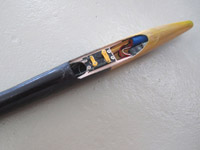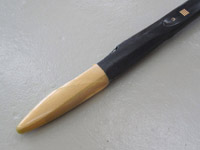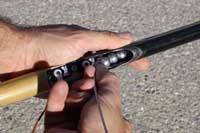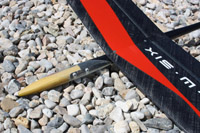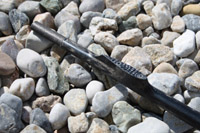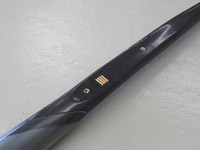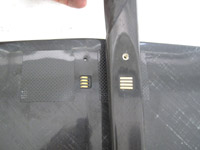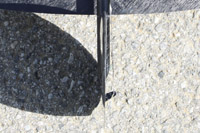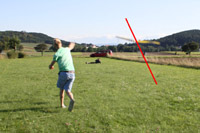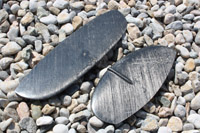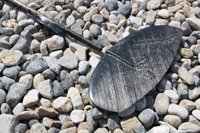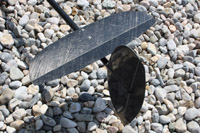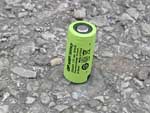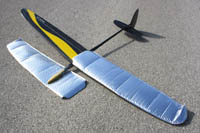NEW:
As of now we offer the improved version FW6.2!
We have received a lot of feedback and turned several
improvements into
reality now. Find more information in the detailed description
below. |
|
| Lower
wingspan - why? |
|
- Due
to the lower wingspan the yaw inertia is reduced
(I=mr²). Result is a faster stabilization
during the starting phase as soon as the pilot has released
the model.
- The
resulting advantage of more starting height is decisive
in competition and can not be caught up during the
rest of the flight. The better initial height allows scanning
larger areas to find a lift. Therefore, the chance for
finding thermals and prolonging the flight is higher.
- In
contrast to models with high aspect ratio lower span provides
- in relation - more cross-sectional
area of the wing.
The resulting higher torsional stiffness in turn
has a positive effect on the starting height.
- The
larger cross section also offers advantages in various
detail solutions, such as the installation of the
throwing peg. Thanks to thickness enforcing material,
which creates additional weight, can be saved.
- The
smaller wingspan improves agility and therefore circling
characteristics.
- In
contrast to models with high aspect ratio the FW6 has broader
wingtips, which contributes significantly to a good-natured
flight behavior.
Simple re-centering and faster curve changes are possible
without noticeable loss of altitude.
|
|
"Full-Core"-
construdtion with rohacell - why?
|
|
|
For
our new competition model, we deviate from the proven shell
construction for the first time.
In this construction technology, the wing is completely
made of rohacell. Just the outside surface is covered
with carbon fiber.
|
|
- With
this building method the torsional stiffness of the
FW6 wing is almost twice as high as of a comparable wing
of our previous model FW5. We could verify this in appropriate
tests. This stiffness again supports the starting height.
|
|
- Since
the stiffness of this design is based on the utilization
of the volume body, the effect is better, the more compact
the body is, or the smaller the aspect ratio ist.
The cross-sectional area acts exponentially
onto the torsional moment.
- Full-core-construction
means that the building material is distributed according
to the volume and not the surface. This construction
technology therefore favors the centering of the masses.
Mass centering means less yaw inertia and therefore quicker
stabilization of the model during start.
|
|
- As
the control surfaces are also built with full
core they are very stiff. As a result the model can
be controlled more precisely and ailerons will be less twisting.
- Building
with full
core means that all reinforcing fibers are placed on
the outside surface of the wing. There they are most
effective. Overall, this building methode requires less
fabric and resin. (In shell construction a part of the fabric
is located on the inside of the supporting material, which
is of a great disadvantage especially what concerns the
stiffness of the control surfaces.) (Note: The controlling
of the ailerons is done with wing servos at the version
FW6.2, not - as shown
here - with levers and servos in the fuselage.)
|
|
| Airfoil
"Zone
V2" - why? |
|
- After
a long verifying process we came to the conclusion that
this profile is still the best solution in total across
the entire spectrum.
|
|
| Further
details: |
|
- White
crossbeams on the downside for optimal visibility.
|
|
- As
skin layer we use 26g or 39g
IMS carbon non crimp fabric.
|
|
- The
gap covers are are made of adhesive tape glued into
a prefabricated recess.
|
|
- All
hinges are designed as kevlar hinges.
|
|
- The
throwing peg is situated at the outer edge of
the wingtip. By this, the lever arm is increased
for optimal disc launch.
|
|
- We
offer special throwing pegs for left and right handers.
|
|
- NEW:
Ailerons are controlled via wing servos as of version
FW6.2.
|
|
| Fuselage |
|
- We
reduced the cross-section of the fuselage in comparison
to FW5. Due to the resulting lower resistance the
dynamics is maintained longer during the launch up to the
maximum height.
- Thanks
to the reduced mass inertia of the wing the fuselage can
be shorter than with our previous models both in
the front and the rear, which in turn results in a reduction
of the yaw inertia.
- The
fuselage of the FW6 is manufactured as FW5 in proven shell
construction with balsa as supporting material. This
design enables high strength.
|
|
- We
use high modular UD-carbon fibre for high stiffness.
|
|
- The
slide-on canopy provides accessibility to
the servo board from both sides. The space can be
exploited better, the installation of the electronic components
is easier.
|
|
- NEW:
At
the
version FW6.2 just the
servos for the stabs are mounted on the radio
board. So there is enough space for placing receiver
and accumulator in front.
|
|
- NEW:
As
a result, the fuselage has only one opening (instead of
2 as with the former version) and the fuselage gets more
strength.
|
|
- The
servos are mounted on the radio board with screws.
So servos can be changed easily..
|
|
- The
ballast tube allows simple loading of up to 70g.
|
|
- The
fuselage cone is made of kevlar to provide
receipt of 2,4GHz.
|
|
- The
pylon for the horizontal stabilizer is made in one
piece with the fuselage. The horizontal stabilzer is mounted
with two nylon screws.
|
|
- All
screw connections are prefabricated.
|
|
- NEW:
At
the version FW6.2 we offer a unique spring-loaded contact
system. Just screw the wing onto the fuselage and the
servos are contacted automatically!
|
|
| Stabilizer |
|
- We
decided on an asymmetric rudder.
Watching
pilots with good throwing technique, the first swinging
out of the model after release is clearly visible
in slow motion analysis. The subsequent movement in the
opposite direction oscillation is already weakened significantly.
The asymmetric rudder acts primarily against the first oscillation.
- Having
a thickness of 6% the rudder of FW6 is considerably thinner
than that of the FW5 and enables higher starts due to
less resistance.
- Because
of the lower inertia of the model, the stabs may
be smaller and thus contributes in turn to the reduction
of inertia.
|
|
- The
stabilizers are also produced in full-core design.
The benefits have already been explained at the wing and
apply analogously for the tails.
- For
the skin we use 26g IMS carbon non crimp fabric.
For the first time we can offer extremely robust, stiff
and at the same light weight stabs for our DLG.
|
|
- A
special shaping of the rudder enables an easy
installation of the vertical stab.
|
|
- All
hinges are designed as kevlar hinges.
|
|
| ACCESSORIES
(not included in kit) |
|
| 4
pieces of GP NiMH Accu 35AAAH are ideal for the power
supply. |
|
| Protection
bags for
the wing
made
of
welded bubble wrap coated
with aluminium foil |
|
Protection
bags made
of stitched foam material coated with aluminium foil,
for wing, elevator and rudder
with fabric edging practical velcro
fasteners and hole for the throwing peg |
|



